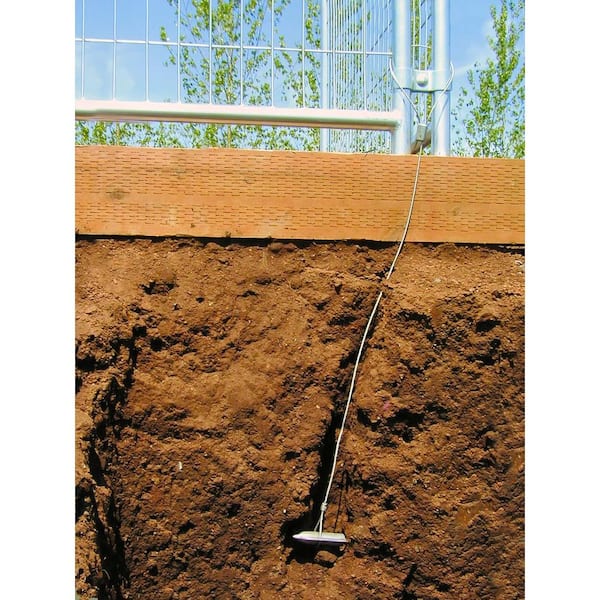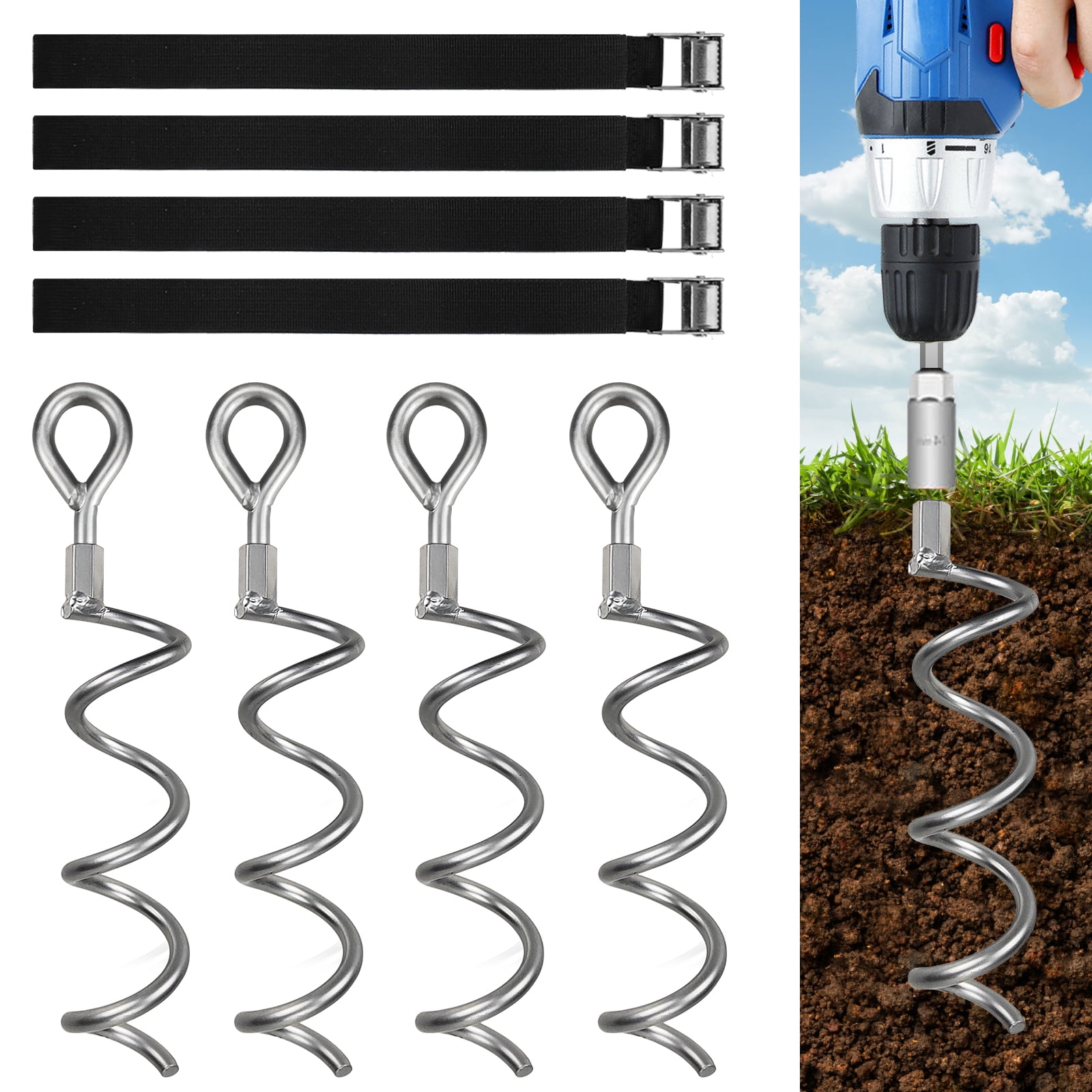Exploring the Main Categories of Ground Anchor Systems for Secure Installations
Exploring the Main Categories of Ground Anchor Systems for Secure Installations
Blog Article
Discover the Different Kinds Of Ground Support for Your Next Project
From auger supports, which stand out in diverse dirt problems, to risk anchors made for short-lived setups, the alternatives are many. Additionally, concrete and screw supports existing distinct benefits in specific circumstances, while deadman anchors are tailored for applications calling for resistance to side forces.

Auger Anchors
Auger supports are a preferred selection in various building and construction and landscape design tasks as a result of their special design and effective securing abilities. These supports include a helical screw-like shaft that is driven right into the ground, enabling a secure and secure hold. The spiral layout assists in simple installment and optimizes resistance versus side pressures, making auger supports specifically reliable in applications such as secure fencing, temporary frameworks, and disintegration control.
The installment procedure of auger supports is reasonably straightforward. Auger supports can be conveniently removed and recycled, which adds to their cost-effectiveness and sustainability.
One of the substantial benefits of auger anchors is their capacity to distribute loads uniformly across the bordering soil, minimizing the threat of dirt disruption and reducing environmental influence. Additionally, they are less at risk to loosening up or heaving in time compared to typical anchoring approaches. Consequently, auger supports are an outstanding choice for tasks needing long lasting and dependable anchoring options.

Risk Anchors
When it comes to safeguarding structures in a range of outside applications, risk supports use a straightforward and trustworthy remedy. These supports are commonly created from durable products such as steel or light weight aluminum, developed to stand up to ecological stress and anxieties while offering optimum stability. Their simple layout permits fast installment, making them an optimal option for short-term or permanent anchoring needs.
Stake anchors are particularly valuable in protecting outdoors tents, covers, and various other lightweight frameworks versus wind and weather. They function by being driven right into the ground at an angle, developing a strong hold that resists pull-out pressures - Ground Anchor. The effectiveness of risk anchors relies on a number of factors, including dirt kind, dampness web content, and the angle of installation
For included protection, lots of risk anchors come with accessory factors for ropes or straps, permitting stress changes as necessary. In applications such as landscaping or building and construction, they can properly support tools or frameworks on unequal terrain. Generally, stake supports provide a versatile and affordable option for protecting numerous outside setups, making them a favored option for contractors and do it yourself fanatics alike.
Concrete Anchors
Concrete anchors supply a durable solution for securing frameworks to concrete surface areas, making sure stability and security in different applications. These anchors are important for projects varying from household building and constructions to massive commercial installations. They come in different kinds, including development supports, sticky supports, and undercut anchors, each developed for specific tons needs and environmental conditions.
Expansion anchors depend on mechanical devices to hold the concrete when installed. They are optimal for medium to heavy-duty applications. Glue anchors make use of high-strength epoxy or resin to bond the support to the concrete, offering premium load-bearing capabilities, specifically in broken concrete situations. Undercut supports create an one-of-a-kind shape within the concrete, supplying phenomenal holding power, particularly in applications where tensile tons prevail.
When performed appropriately, concrete anchors dramatically enhance the structural honesty of various jobs, making them important in modern-day building and construction practices. Recognizing the particular requirements of your job will aid in choosing the best kind of concrete support for the task.
Screw Anchors

Screw supports are a versatile fastening service that can be efficiently utilized in a selection of applications where traditional concrete anchors may not be sufficient. These supports consist of a helical design that permits them to be quickly driven right into the ground, making them excellent for use in soil and other substrates. Their distinct framework gives outstanding holding power and resistance to pull-out forces, making them suitable for countless projects, from landscape design to architectural assistance.
Among the primary benefits of screw supports is their ease of setup. They call for very little devices and can typically be set up without the demand for excavation, which saves both time and labor costs. Additionally, screw supports can be eliminated and reused, supplying a lasting option for temporary applications.
Screw supports are specifically useful in locations where soil problems are testing, such as sandy or loose soils. Their capacity to be set up at differing depths permits personalization based upon details job needs. Generally, screw anchors offer a reputable and reliable see this site anchoring approach, making them a superb selection for engineers and specialists seeking efficient remedies for their tasks.
Deadman Anchors
Deadman supports act as a durable solution for maintaining frameworks in challenging conditions, particularly where standard anchoring methods might fail. These supports contain big, hefty things hidden underground, which create resistance against side forces. The style commonly entails a click this link straight element, such as a block of concrete or a steel plate, hidden in the soil, to which cables or bands are attached.
The performance of deadman anchors lies in their capacity to distribute tons over a bigger location, lowering the threat of failure in unstable soil conditions. They are specifically helpful in applications such as maintaining walls, short-lived structures, and incline stabilization, where soil activity can endanger the integrity of the framework.
Setup of deadman supports requires cautious preparation to ensure they are put at the proper deepness and alignment, maximizing their load-bearing ability. While they may call for even more labor and product than lightweight anchors, their dependability in damaging conditions makes them vital for long-lasting jobs. Furthermore, deadman supports are flexible and can be adapted to various applications, making them a go-to choice for designers dealing with special obstacles in their tasks.
Final Thought
In summary, selecting the suitable sort of ground support is vital for ensuring security and security in numerous projects. Auger anchors excel in varied soil conditions, while stake anchors fit momentary applications. For concrete surfaces, expansion and sticky supports provide reliable alternatives, and screw supports provide versatility in tough terrains. Deadman supports are specifically efficient in withstanding lateral pressures for retaining wall surfaces. Cautious factor to consider of these options will boost project end results and architectural stability.
In a knockout post addition, concrete and screw anchors present special benefits in specific circumstances, while deadman anchors are customized for applications requiring resistance to lateral pressures - Ground Anchor.Auger supports are a preferred choice in different building and construction and landscape design tasks due to their one-of-a-kind design and effective securing capacities. They come in various types, including expansion supports, glue supports, and undercut supports, each created for details load needs and ecological problems
Sticky anchors utilize high-strength epoxy or material to bond the anchor to the concrete, offering exceptional load-bearing abilities, especially in broken concrete scenarios. In general, screw anchors offer a effective and reputable anchoring method, making them an excellent option for designers and professionals seeking reliable services for their tasks.
Report this page